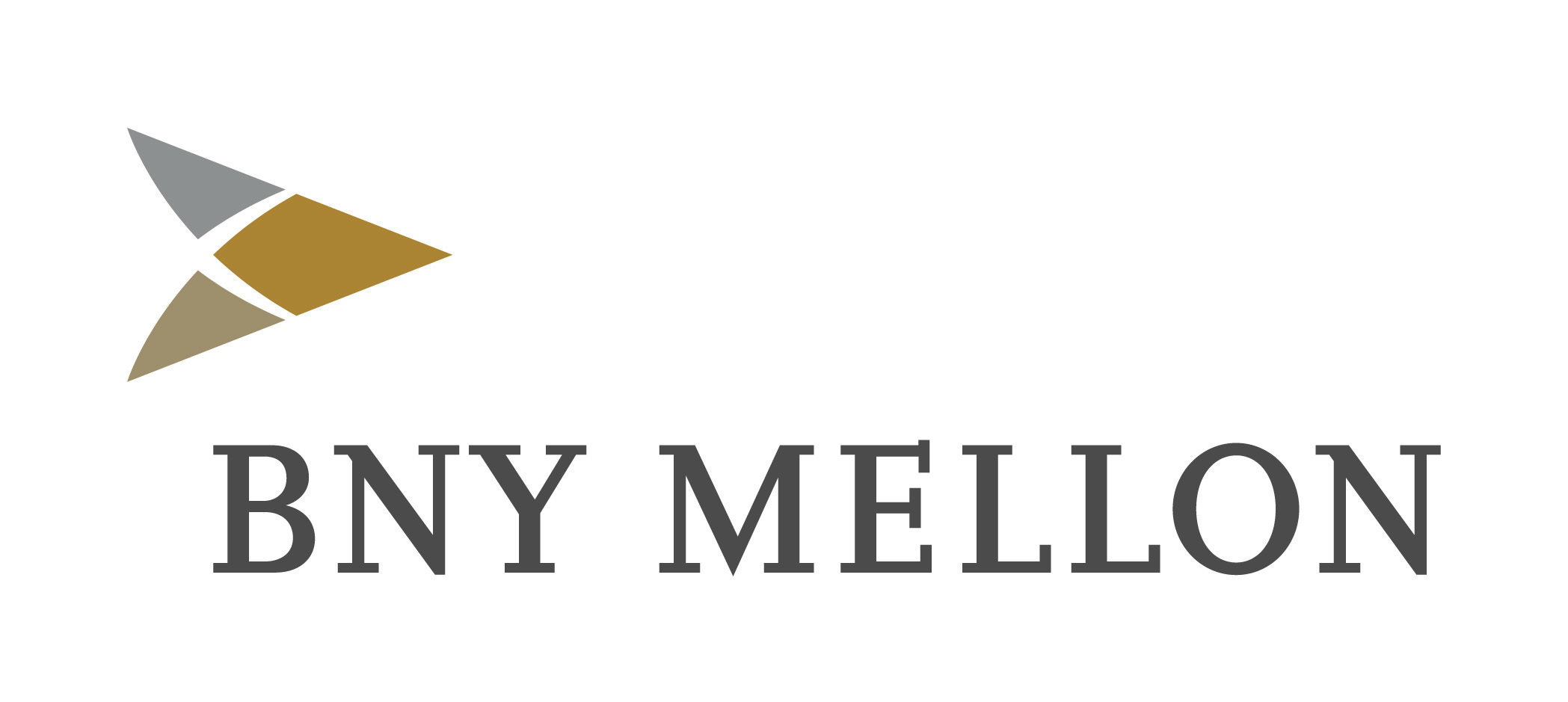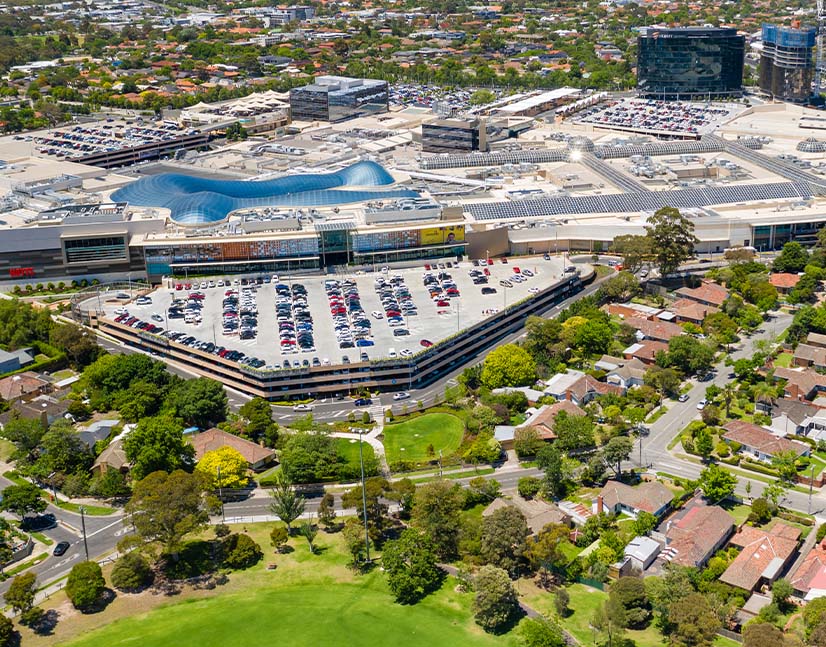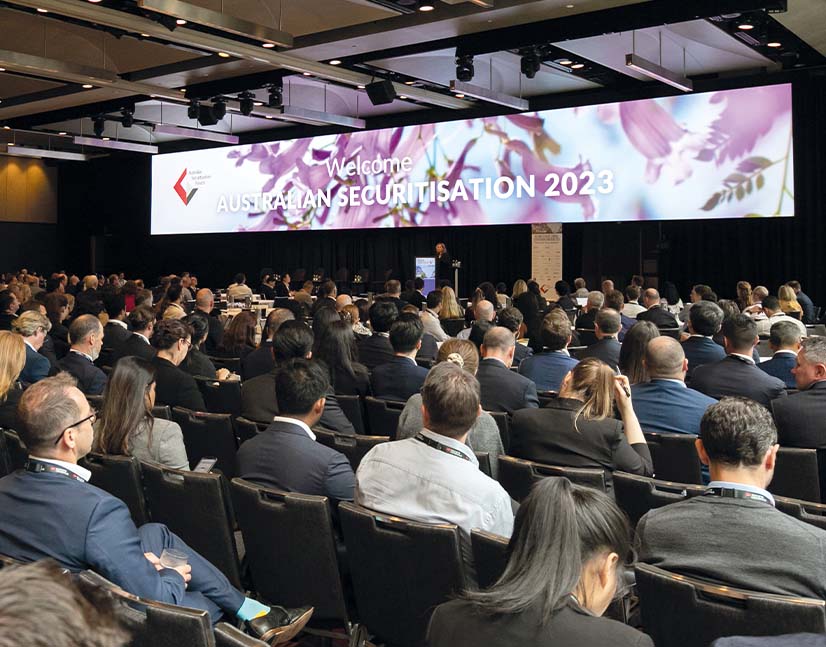
Asset-class diversity adds fuel to red-hot Australian securitisation market
Record issuance of Australian dollar securitisation in 2021 has been driven by nonbank names, with a significant contribution coming from the growth in issuance of nonmortgage asset-backed securities deals. In September, BNY Mellon and KangaNews gathered a predominatly female group of sector experts to discuss market outcomes and the outlook in the latest phase of the pandemic.
BOOK PERFORMANCE
Davison It is interesting to contrast credit experiences in 2020 – when the onset of the pandemic brought a flood of hardship requests but, in the end, no major deterioration in credit quality – with Australia’s new lockdowns in 2021. Are borrowers really in much better financial health this time round?
SPATA Households are in a better position in 2021 – because of higher savings rates and, potentially, government support – and there is also more certainty around the path out of the pandemic. On the SME side, as an example, last year virtually every business was advised by its accountant to apply for hardship regardless of whether it needed it – we have just not seen that trend this time around.
On the consumer side, last year – just to deal with the volume flow – a lot of issuers initially had to approve hardship applications automatically. This time around, because we have not seen the same flow, issuers are assessing each application on a standalone basis. Borrowers have to need it and they have to give us evidence.
From an origination perspective, things had largely returned to normal in 2021 following a lull in origination last year. This makes complete sense in the context of economic performance and the recovery we are experiencing. We have seen collateral performance hold up as well.
I don’t think anyone was forecasting us to have this third wave of lockdowns over the last six months and we have certainly seen origination volume come down a little in the consumer book. But we have not seen the same tapering in spending – particularly in our credit-card book – that we saw last year. It doesn’t feel as though households have been as conservative as they were in 2020.
All of this is really driven by the fact that we have not seen the same panic as last time around. When hardship applications skyrocketed over the course of a couple of weeks last year, a lot of behaviour was driven by uncertainty. The key is that we have a way out – including a vaccination rollout on track. There is a lot more certainty about the potential impact on markets, too.
We have seen a small uplift in hardship on the consumer side and we are taking all measures necessary to support these applications. In the SME sector, where we were seeing double-digit per cent hardship levels last year, we are now seeing a much smaller portion of the book affected.
While I do not think we are out of the woods and there is still a degree of uncertainty, the consumer and business customers we service have been behaving quite differently this time around.
HURFORD Our experiences with hardship are identical. If we roll back to the end of March last year, over roughly a four-week period we had up to 40 per cent of our book making enquiries for some form of assistance.
Roughly 75 per cent of these followed through. But, by the time we processed the applications and provided either some form of short deferral or reduced payments, JobKeeper and bank deferrals had started to kick in.
We provided about 15 per cent of our book a short-term deferral at some point – but pretty much all of them got back on their feet save for a handful, primarily in the travel and events industry.
By the time we came to the Victorian lockdown in the latter part of last year – which was much more severe even than what it has now and what the whole country went through in the first part of 2020 – the impact on our book was not material.
My guess is these borrowers accumulated just enough cash to pay their commitments, which is why the Victorian lockdown in the second part of the year was somewhat less impactful. Roll forward to June 2021 and we had a record origination month even as two of the largest states went into lockdown.
If 15 per cent was on deferral at the peak last year in April-May, I think we are now at about 10 per cent of that – so roughly 1.5-2 per cent of our borrowers have asked for some form of deferral assistance.
This has to do with the absence of panic. We have been through lockdown before and there is confidence that it is going to be hard but we will get through it. Government assistance has also kicked in.
We are certainly pleasantly surprised by the relatively low requests for assistance, but we understand why – because we saw what happened in 2020.
Davison In 2020, large corporate borrowers generally went through a process of shoring up liquidity, particularly by renewing or extending debt facilities, to make sure they could handle outgoings in what was obviously going to be a very challenging period. How does this compare with the SME sector – and do lenders think differently about providing credit to ‘tide over’ smaller businesses?
HURFORD The key foundation of our credit analysis is bank-statement review of our borrowers. We get a perspective on how the business’s cash-flow is tracking. One of the interesting things is our borrowers were relatively better from a cash standpoint going into lockdown at the end of June this year than they were going into the start of the COVID-19 pandemic in March 2020.
This tells us borrowers that have been through the experience of 2020 want to have more of a cash buffer in their businesses. They now have the hindsight to know what they should have up their sleeve as a prudent measure for what might happen in future.
We do not, in general, lend to tide borrowers over when they are anticipating bad times. We lend based on how they are tracking up until the point that we underwrite the business. We can see sales coming into their accounts, how they are managing their cash positions and what their debt commitments are. We do not have to make a leap of faith or take risk that we are lending to a business that might be about to go through hard times.
Davison Credabl lends to medical professionals – a sector that was in the front line of the pandemic. It would be interesting to hear how its experience compares.
KOLBE I agree with the general assessments outlined by my colleagues. Last year we saw widespread initial uncertainty caused by a lack of understanding and nervousness about what was coming next. The government had not yet established the essential support that came through. This obviously changed quite quickly, giving greater comfort.
We exclusively support and provide finance solutions to medical professionals, and it was relatively easy for them to bounce back after an initial period of disruption. It was also helpful for us to be a very exclusive, hands-on business – because we were able to get on the phone with literally all our clients, discuss their individual situations and offer some comfort in the storm.
The concept of applying for deferrals and payment holidays from banks was coming up a lot in the media without a lot of detail on the impact. We were confident to tell our clients we would be there to help if they needed our assistance but that, as with other lenders, it would come with a cost: interest is going to accrue.
In other words, if clients were able to continue servicing their debt, we highly recommended that they did so. We were also quick to counsel them on the potential impact on future lending applications – which quickly turned out to be true in much of the market.
We did not roll out quick, six-month blanket approvals. We went through all our clients individually and, where appropriate for them, gave them three months’ deferral. We continued to assess the situation and if they needed an additional three months we were more than happy to support them.
We made a business decision that we did not want to impose extra interest for something that was not required, but it took some explaining to our clients as much of the mainstream media was focused on blanket deferrals.
Since last year, our originations have gone from strength to strength. We passed A$1 billion (US$716 million) in total originations in December last year and A$1.5 billion in June this year. Surviving the worst of COVID-19 is a testament to our business model and the fact that the profession is an essential service.
SECTOR VIEW
Davison One might assume the medical sector would do quite well in a pandemic, but of course we have seen things like elective surgery being postponed at times over the past 18 months. How affected has the industry been?
KOLBE One of the other great things about the medical industry is practitioners can quickly retool and deploy for work somewhere else – especially those who are in sectors other than emergency procedures.
For example, someone who was doing traditional elective surgery, which was forced to shut down, can typically go into the hospital system and transition to some form of emergency work. Their services are always in need, in other words. Anyone who re-oriented has typically survived the storm and has been able to deal with the downturn better than most.
Davison How has origination tracked across the SME lender space?
HURFORD Our volumes were pretty benign from April through to the end of 2020. We were underwriting what we assessed at the time to be “bankable” deals. This kept our book pretty much flat for the period. Then the economy snapped back in the fourth quarter and continued into 2021 so, as I said, we had a record month in June.
We are a small player that is still growing so our growth may not necessarily be representative of the overall market. But we knew the economy was doing well and we were in a position to capitalise on this.
What we have seen since 30 June is surprisingly robust origination volume, although it has certainly dampened down. But our book is still growing at a reasonable clip – in a more robust manner than we all might have expected.
Davison Is it as straightforward as growth in New South Wales (NSW) and Victoria being down, with overall growth being propped up by the parts of the country that are not in lockdown? Or is it more complicated?
HURFORD It is a bit more complicated because there are still industry sectors that are doing okay, whether in Sydney and Melbourne or the regions. There are still civil contractors and construction firms in these states that are going to work and needing capital, albeit not in the hotspot local-government areas. Some pockets of food retail are still doing okay, too, though a number of industry subsectors are really suffering.
Davison What is the investor view on sector risk? Will there be wariness about particular industries because of fear that the economic rebound is not going to be universal?
BOURKE We are still cautiously optimistic, simply because there is just so much government support. JobKeeper has been rebranded to COVID-19 disaster payments but really we have seen the same level of government support as in 2020, or at least a very high level of support.
Saving rates are astronomically high: circa 10 per cent, having reached a peak of 20-25 per cent. This is still double the long-term average savings rate, which means a massive cash buffer is still available. Interest rates have obviously reached a record low and there has been a lot of refinancing activity to lock in very affordable loans. We have also seen a surging market for houses and cars.
There is a lot of cash in the system. Last time I checked, there was A$380 billion or more of banks’ cash sitting in the Reserve Bank of Australia’s exchange-settlement account. This is a huge amount of cash in the system supporting house prices and other assets – something like one-quarter of GDP is just sitting there and earning nothing.
Adding all this up, and thinking about the cautious approach of various lenders, the outlook looks good. Hardship is at 1-2 per cent for nonconforming lenders as of June. Maybe this will increase, but there has been a lot of time for borrowers to acclimatise and there is a huge amount of money in the system. This is why we are cautiously optimistic.
Looking forward, we rank-order types of credit. We are more cautious on SME and nonconforming lending because we take the view that self-employed people might struggle to get as much assistance from the government in future. We think consumers in general will do pretty well as there is a lot of support for those who may lose their jobs.
We have a pretty benign outlook on auto ABS [asset-backed securities], given how much money is in the system to support collateral. We take the view that if someone is in trouble they will sell their car, and if it is a second-hand car it is likely to be worth more than book value. The same can be said for someone selling their house.
Davison What outlook are lenders taking on the SME sector in particular, especially if – as we are now assuming – Australia has a more mitigated reopening under a ‘living with COVID-19’ scenario?
HURFORD We will underwrite and take risk on a business if we see a good history of cash in its operations and sales over the last 6-12 months. This is essentially what we did coming out of COVID-19 lockdowns last year.
I think this will tell the tale of what we are reluctant to lend to going forward. It will be the businesses that have been suffering over the last quarter but also do not have an outlook to perform over the next few months.
With the vaccination rate so high in NSW and the expectation of relaxed restrictions, if we do not get a sharp snap back we should see at least a reasonably steep incline. I am expecting activity to ramp up in late October, albeit there will inevitably be some businesses in some areas that will not pick up as fast as others.
SPATA We are also pretty positive about the outlook, which we feel is more dependent on the timing of restrictions easing than the strategy. We have businesses in Australia and New Zealand, and to date these two economies have taken quite different approaches to virus containment. But the outcomes have been relatively similar.
New Zealand was previously operating with a clear elimination strategy, which meant we saw a swift bounce-back – as soon as New Zealand came out of lockdown, life returned to normal and we saw this come through in origination volume. Australia has taken a softer approach but we have ultimately got to the same spot – it just took a little longer.
We are positive about volume. I think there is going to be a huge surge in consumer spending coming into Christmas. On the SME side, the sector has performed unexpectedly well for us over the last 12 months. Our flexicommercial business is squarely focused on secured asset finance and we have seen a lot of opportunity in this market.
I think COVID-19 has highlighted the nimbleness of the nonbank sector in the SME segment as the banks continue to retreat from it. We have seen particularly strong volume flow and we are expecting this to remain the case.
Pipeline of securitisation newcomers
The last two years have seen a proliferation of new issuers entering the Australian securitisation market. The pipeline cannot go on forever but is not yet showing any sign of running dry.
O’SULLIVAN As a service provider, it certainly feels that it has been very busy. The majority of Australian issuance continues to be RMBS [residential mortgage-backed securities] – it is around 80 per cent of the securitisation market.
But other asset classes are extremely active and growing – we are definitely seeing a much broader issuance spectrum come to market. However, it is not a bottomless pit. It really depends on the particular industry, our clients’ underlying volumes and lending strategies.
One thing we have found is that, although we are working through the deal process remotely, it has become an intimate relationship. We could speak to clients up to 10 times a day. Even on the quickest, briefest point, our phone is constantly ringing – especially in the lead up to a new warehouse or capital-market transaction.
FUNDING-MARKET CONDITIONS
Davison How has the ‘plumbing’ of funding markets and government support held up during the pandemic?
WAGSTAFF The Australian Office of Financial Management (AOFM)’s forbearance special-purpose vehicle (FSPV), set up by industry, is a great facility. BNY Mellon had about 50 trusts that used it including one with about 35 per cent of the portfolio at one point in time in hardship. But, as has been said, almost all borrowers came out of hardship and paid their obligations.
It is important to emphasise how helpful it is to know the AOFM has the FSPV in the wings to use again if need arises. It speaks to confidence in securitisation as a funding tool, and the government standing behind it.
GOUMENIS The warehouse side has been consistent with the comments we have heard already, in the sense that warehouse funders last year were nervous about COVID-19 hardship applications. Multiple parameters, restrictions and requirements went into documentation covering hardship applications. But we definitely have not seen this repeated in 2021, which is consistent with the comments from the issuers on this front.
GAAL If I look back to where we were 12 months ago, everyone was really concerned about where portfolios were going to be from a performance perspective.
We did a lot of modelling to determine what the worst-case scenarios could be in regard to, for example, defaults, when amortisation triggers would occur and whether we would incur loss as a senior financier. This was all because we did not really have a sense of what the likely impact of COVID-19 was going to be, in any asset class.
There was negotiation on various issues at the time, including amending arrears triggers to see if they could exclude COVID-19 hardship receivables to ensure portfolios would not go into amortisation. A lot of work was done, not only to get issuers comfortable their facilities were available for funding but equally so our credit teams could continue to roll warehouses that were coming up for extension.
As we speak today, we are in week 11 of lockdown in Sydney while Melbourne has had various lockdowns over the course of the last 12 months – and yet our credit teams are really quite silent compared with this time last year.
It is pleasing that COVID-19 hardships have not converted into arrears, which obviously was a concern at the end of the relief periods. I think this has created a very solid position for bank lenders and investors alike.
“Accessing the term market has always been a key part of our strategy for 2022, whether it be the private or public market. The jury is still out on this. Market conditions are definitely a positive factor, because they have given us confidence in all aspects of our business – especially the origination side.”
Davison One could make a defensible case that 2021 has been the best year ever for nonbank securitisation in Australia, taking volume, diversity of assets and pricing as metrics. Why has this been the case?
GAAL It evolved from the beginning of the pandemic last year. We have discussed the fear factor at the beginning of COVID-19 – no-one knew what the outcome, or what the performance of assets, was going to be.
It was the same in the funding market. In March last year, some issuers really struggled to get investors to take a look at their deals as they were not sure whether rating criteria would address pandemic risks. However, confidence came back once investors saw support coming from the government and that hardship numbers were not as bad as predicted.
The liquidity the term-funding facility (TFF) created and high deposit rates from savings have funnelled through to funds that need to be invested for a return. The combination of these factors has provided a robust environment for investors in a collateral class they are familiar with, in an economy they have seen stabilise throughout the pandemic.
SPATA We have had a record financial year for securitisation issuance. It is pleasing to see the nonbank market grow as it did following the first stages of COVID-19.
A few things contributed to this. The first is increasing opportunities for nonbanks across all aspects of lending. This has in turn been helped by opportunities across equity markets and private capital to allow less mature lenders to grow their businesses. This is translating into new issuers in the market: we have seen several inaugural capital-market transactions over the past 12 months, and we will continue to see them.
Early support and backing through the AOFM’s Structured Finance Support Fund solidified the importance of the nonbank sector and gave issuers confidence, after the first wave of disruption, to test markets and allow traction to build.
Collateral performance has been strong. Domestic and offshore investors have seen how Australia has fared through the pandemic, and also the relative value of Australian RMBS [residential mortgage-backed securities] and ABS over this time versus some of the other opportunities.
Some of this may not continue indefinitely. But I believe a lot of what we have built as an industry over the past 12 months is here to stay.
Davison Have market conditions changed newer lenders’ thinking about funding strategy, for instance accelerating the likely path to public issuance?
HURFORD The focus for us in 2021 has been to upsize our warehouse, including bringing in some additional institutions as mezzanine funders within it. This has not changed. Accessing the term market has always been a key part of our strategy for 2022, whether it be the private or public market. The jury is still out on this.
Market conditions are definitely a positive factor, because they have given us confidence in all aspects of our business – especially the origination side. There is clearly a deep pool of investors in the public market.
KOLBE We have found the same. Current conditions are ideal, especially from a pricing perspective. However, as a new issuer we still have a reasonable lead time to any public-market issuance – probably around 6-9 months. We have to be aware that the market could easily change within this time, too.
We are probably more focused on when the right time is for Credabl to issue and undergoing the journey with the various parties in our facilities. It is definitely part of our short-to-medium term strategy, which has not changed. But historical statistics on the business show there has been consistently high demand for medical-only receivables. Given we are the only nonbank lender providing these at the moment, we expect there will be really good support regardless of when we go to market.
GOUMENIS One of the interesting developments we have seen is with some newer issuers that are going through the extensive lead time and preparation that needs to be done with the rating agencies for capital-market issuance. We have seen these names complete ‘piggybacking’ arrangements, where they have entered into strategic alliance with a more mature issuer.
For example, we saw Athena and Bluestone Mortgages enter into an arrangement whereby the latter has now done its inaugural RMBS transaction with prime mortgages, which included an Athena portfolio.
I think we will see a few more of these strategic alliances in which new entrants piggyback off others as their first step into the public market.
BOURKE These combined pools are an interesting development but there are a few considerations from an investor perspective. It is probably easier for RMBS than for nonmortgage ABS, because rating agencies need track record on an asset – and they have models of how most mortgages perform.
The other question for investors is the incentive of the sponsor to call these loans. Call risk is key for investors, and where transactions have not been called they get marked down materially in price and become very illiquid. It causes a bunch of grief if it drags on for years and years.
MARKET OUTLOOK
Davison We often hear that mezzanine tranches are the most sought after, but how hard is it to get desired exposures? Does having established relationships with issuers help?
BOURKE When we are looking at mezzanine investments that may be 4-10 times oversubscribed, our relationship with the issuer might be worth a couple of per cent more in an allocation. We recognise that issuers cannot give preferential treatment because at some point it would mean not having relationships with other investors. While relationships help, it is super competitive at the moment.
There is also a delineation between investment-grade and high-yield notes. I estimate there is roughly half the level of demand in the high-yield market because, I assume, many investors do not have a mandate to buy. Even these notes are typically oversubscribed, though.
The other component is that many of these notes are placed to warehouse providers even before a deal launches. The way we have dealt with this is by moving upstream – we have been doing quite a lot of warehousing.
From our perspective, we think public markets have had a good run and there are still pockets of opportunity with many new issuers. Investors get paid a concession by new issuers for having an unusual type of deal, because there is not a triple-A tranche and other reasons.
There are still ways to make money in this market. We have been more active in the warehouse space because it is more attractive. Funnily enough, it is less competitive for big investors because there are only a few of them and there is a lot of AOFM refinancing supply.
Davison Some elements of the positive story will not last forever – perhaps most notably the absence of competing supply from major banks. How confident are market participants that the Australian securitisation market now has the infrastructure to support more supply on an ongoing basis? How does the relative-value proposition for the asset class – which has reduced as spreads have compressed over the course of the year – feed into the outlook?
BOURKE We are likely at the tight point in the cycle, or if we are not we are within a couple of basis points. The TFF rolling off will create competing assets at, hopefully, wider spreads.
But, overall, securitisation is a defensive asset class, it is short-dated and its fundamental performance has been very good. I expect spreads to drift wider but I am not expecting them to move significantly wider. It is not a bad place to park some allocations because it is not subject to the same level of volatility as many other assets with a similar carry.
It is relative, in other words. In this context, securitisation is certainly not a bad asset class. There is still some value in pockets, though even these will probably drift wider with the market.
GAAL I agree. If we look at some of the more recent transactions, the senior triple-A tranches have been oversubscribed but certainly not by as much as the mezzanine notes. There is a bit of softening sentiment, whether it is because there has been so much supply or fatigue on being pushed to tighter prices on every transaction. There has started to be a little pushback on price.
We have also seen some banks come back into the market, which will be an interesting development to watch. While liquidity is still strong, regulatory capital relief for ADIs [authorised deposit-taking institutions] is still a very attractive reason to come to market. I think we will see a pipeline of these transactions in the back end of this year and into next.
Securitisation is still a key funding tool for ADIs and I think they will want to reconnect with investors after being out of the market for quite some time.
“I think we are at the tight point in the cycle, or if we are not we are within a couple of basis points. But, overall, securitisation is a defensive asset class, it is short-dated and the fundamental performance has been very good. I expect spreads to drift wider, but I am not expecting them to move significantly wider.”
THE RISE OF ESG
Davison How hopeful are market participants of growth in green and social securitisation? It seems there is no shortage of demand, and in fact the challenges are mainly on the asset side.
SPATA I have been hopeful we will see the green space grow for a long time now. But I think it has been, and will continue to be, a slow burn.
There are significant opportunities for green-asset growth. We have been in the solar-financing business for a very long time and view it as a core part of our business. Although solar-panel adoption has grown over recent years, battery adoption is still very much in its infancy.
There is lots of opportunity to grow in this space. We recently announced we were entering the virtual power-plant market, which is becoming increasingly popular as a means of pushing out solar and battery adoption. We have seen growth across other issuers in the market as well, including Brighte having brought its first ABS transaction to market last year. Even so, translating into growth in the securitisation market is slower than perhaps we would like it to be.
On data capture and reporting, we have been issuing certified green bonds for a long time and I do not really see these issues as impediments to the process. There is a lot of support and good infrastructure in place now through the Climate Bonds Initiative and the verification process feels well understood.
Investors’ interest in ESG [environment, social and governance] has ramped up over the last 18 months. We used to speak to investors about it purely because we were bringing green assets to market. But we are increasingly talking about ESG across all our trades.
We have had experiences of investors bringing dedicated ESG specialists to meetings, not because we are bringing green assets but to talk about ESG more generally. It is a huge focus.
BOURKE ESG is becoming mission critical. The amount of engagement on it from our own investors throughout the portfolio has grown exponentially.
In the past, the way we used to operate was to be cautious. We were cognisant of ESG in the context of armament and tobacco bans, and we had a focus on governance risk.
We have evolved a lot in the last year or two. We have created a new system, we internally rate our investments based on materiality of risk under the SASB [Sustainability Accounting Standards Board] industry framework and we also look at how the entities managing risk are improving or deteriorating.
If they are high-risk and deteriorating, they get a red light from us. We engage with issuers and follow up multiple times until they have fixed any problems. In cases where they have not addressed our concerns, we have sold bonds. Overall, for us it is more about issuer engagement as a whole rather than where they put the assets – into green bonds or the like.
When it comes to securitisation, we have participated in some of the hummgroup green tranches. We have also invested in a warehouse that funds green assets.
One of the more interesting things we are looking at is a social-impact bond supporting women. It is a private securitisation deal, but if it prints we are hoping it will encourage further development in the space.
Davison As ESG becomes increasingly mainstream, does it paradoxically make issuing green tranches harder – because investors are less willing to accept pools where the green assets have been separated for labelled issuance?
GAAL I think there are a couple of issues. When we do our due diligence, particularly for warehouse transactions, we are now also looking at the sponsor’s ESG position. This extends not just to the assets it is writing but its overall philosophy and its thought processes it deploys as an overall corporate entity. I think this aspect of ESG will play out a lot more in future from a sponsor perspective.
The other piece is data. A lot of market participants are looking at what they can do with regard to green assets, but also at how they build their data to ensure they can be classified as meeting investor requirements.
Davison Do any of the issuers have a view on social securitisation? It seems Credabl and Get Capital might be decent candidates for this – is it on the radar?
KOLBE It is front of mind for a lot of our funders. While we are not specifically in the green sector, by providing financing to medical professionals we think the credit we write would be a great candidate for social securitisation. It is an evolving area, but it is certainly on our radar and will be front of mind when it comes to our first public-market issuance.
HURFORD It becomes more relevant as we gain scale. At the moment, we are building a reasonably sized business with the right degree of scale to access funding markets and achieve sensible and sustainable outcomes going forward.
Once we have real scale, we can start to position our book and strategy so we can define social good. It is not on the radar for us in the short term, but I can see it becoming relevant in the medium-to-long term.
Davison How much interest are arrangers and service providers uncovering in ESG securitisation in general? What do they tell issuers they need to be prepared to offer if they want to pursue this option?
O’SULLIVAN Being a global market participant means it is of huge significance for us as an organisation, especially in seasoned markets. We are very keen to be involved. Enquiries are coming through, though it is not the driving force behind new-deal volume.
One challenge to market growth is that it seems each participant has its own ESG process. There does not seem to be a consistently accepted approach. A lot of providers are trying to streamline assessments but we are definitely nowhere near consensus.
WAGSTAFF The question that always comes up in conversations is what the trustee can do to collect data for certifications and put a stamp on so everybody is comfortable with it. But, again, it is always a very difficult topic because every asset has a different process and certification is always complex.
GOUMENIS It is a similar situation from a legal perspective. There is no fundamental difference between green and ‘normal’ securitisations and all the certification process is happening outside the securitisation documentation process. What will be interesting, though, is at what point we start to link things like events of default or triggers in transactions to ESG requirements.
It is worth noting that the CEFC [Clean Energy Finance Corporation] helped fuel the fire in green securitisation transactions by acting as cornerstone investor in deals and helping issuers have the confidence to come to market. I wonder whether we need something similar to assist in the social space as well.
Engagement with offshore investors
At the end of a record year for Australian dollar securitisation and with international borders still closed, it might be assumed that local issuers have dialled back their offshore-investor engagement. This is not the case.
GOUMENIS Some proposed regulations placed Australia effectively on a noncooperative list from a tax perspective, which meant certain European investors would not be able to invest in SPVs [special-purpose vehicles] coming out of Australia.
Luckily for us, the final approach seems to have changed whereby investors only need to give notice to their local taxing authorities that they are investing in transactions from SPVs in noncooperative tax jurisdictions. It does not seem to be a roadblock.
Legislation has been passed addressing the offshore-banking-unit issues that were causing Australia to be on the noncooperative tax list, and we are just waiting for the royal assent of this legislation. It seems the issue has been put to bed, at least from a regulatory perspective.

nonbank Yearbook 2023
KangaNews's eighth annual guide to the business and funding trends in Australia's nonbank financial-institution sector.

WOMEN IN CAPITAL MARKETS Yearbook 2023
KangaNews's annual yearbook amplifying female voices in the Australian capital market.















